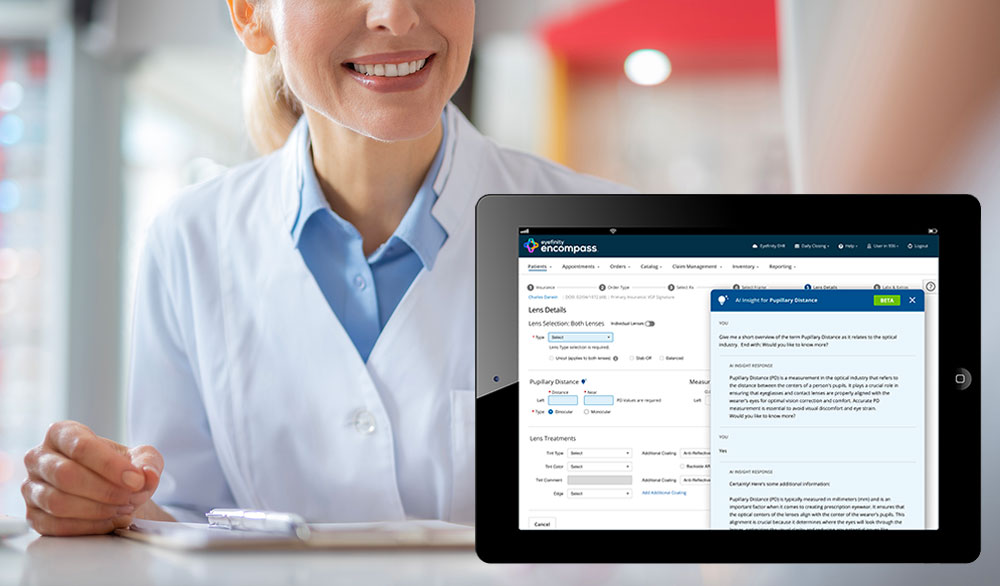User Assistant - Contextual Help
Since the start of the COVID-19 pandemic, many optometry employees have not returned to work, causing businesses to hire less experienced individuals. This has resulted in inadequate order processing, poor follow-up on claims, and errors impacting the overall customer experience. Additionally, notifications of missing information or errors are often received after the fact, leading to a backlog of unprocessed orders.
⟵ Back
Organizations:
VSP Vision Care
- VisionWorks
- Eyefinity
Project:
Encompass:
- Contextual Help
- User Asistant
My Role:
Sr. Manager Product Design
- Vision and Strategy
- Lead Design Work
- Team Management
Goals:
Elevating Eye Care Experience:
- Reduce Office Staff Frustration
- Increase Personnel Efficiency
- Increase Business Profitability
The Problem
Our platform did not offer users any contextual help throughout the most complex workflows, such as "order processing," "claims management," "insurance benefits," and others. With the influx of inexperienced personnel, it became crucial to prevent them from making mistakes and accessing decontextualized data that added to their confusion and frustration, preventing them from offering patients an efficient, reliable customer experience.
The Solution
We aimed to redesign the workflow to ensure inexperienced users wouldn't need to access help materials or call our Customer Care team. The goal was to make every step of the process intuitive enough for anyone to follow from start to finish, minimizing the amount of training and guidance needed for new personnel. We also wanted to provide shortcuts for experienced individuals and make the workflow efficient and trustworthy.
My Contributions
- Review current help content materials with the content team.
- Conducted sessions with Customer Care team to identify issues.
- Discovered and focused efforts on most complex workflow.
- Guided UX team on cognitive walkthrough on material order flow.
- Focused design effort to minimize list of most common issues.
- Managed executive presentations for project approval and buy-in.
Order Process Review
To define this project's scope and pinpoint significant issues within the Eyefinity Platform, I led the UX team in performing Heuristic Evaluations, Cognitive Walkthroughs, and a set of discovery sessions in partnership with the "Content" and "Customer Care" teams. Through these activities, we determined that the "Material Orders" process was the most crucial area for improvement within our platform, as it accounted for 50% of the service calls.
Workflow Analysis
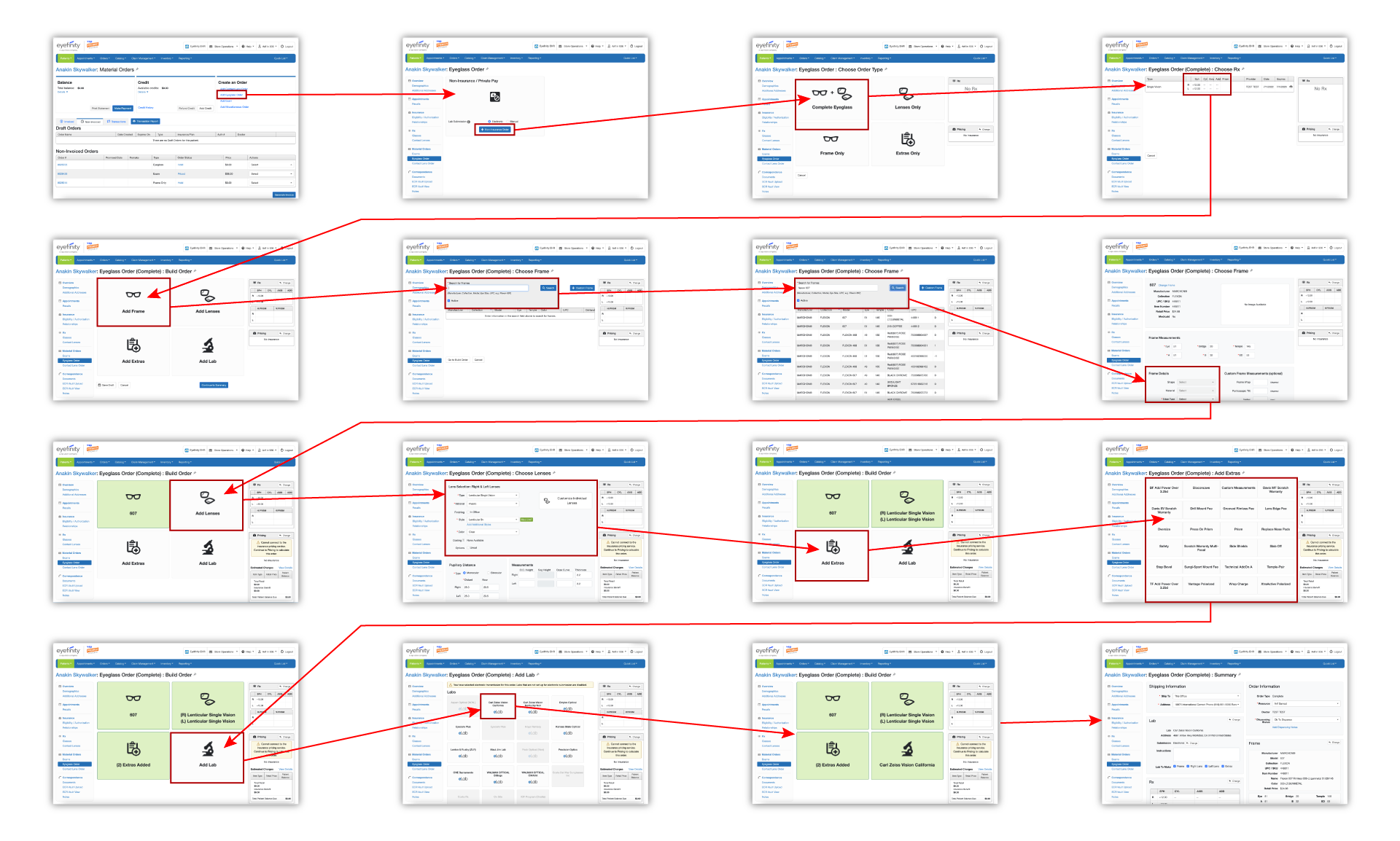
Findings
Store Associates:
- have no guidance through the Material Order workflow.
- have to navigate between 16 and 25 pages to complete an order.
- there are not safeguards in place to prevent users from making errors.
- forced through a process with high cognitive and kinematic load (100's of possible steps).
- workflow is not intuitive and each navigation section seems disconnected and unrelated.
- all platform users are subjected to the same navigation flow, no shortcuts for experts.
- while icons affordances are good, they are not effectivelly informing users what to do next.
Current In-Product Help Methods
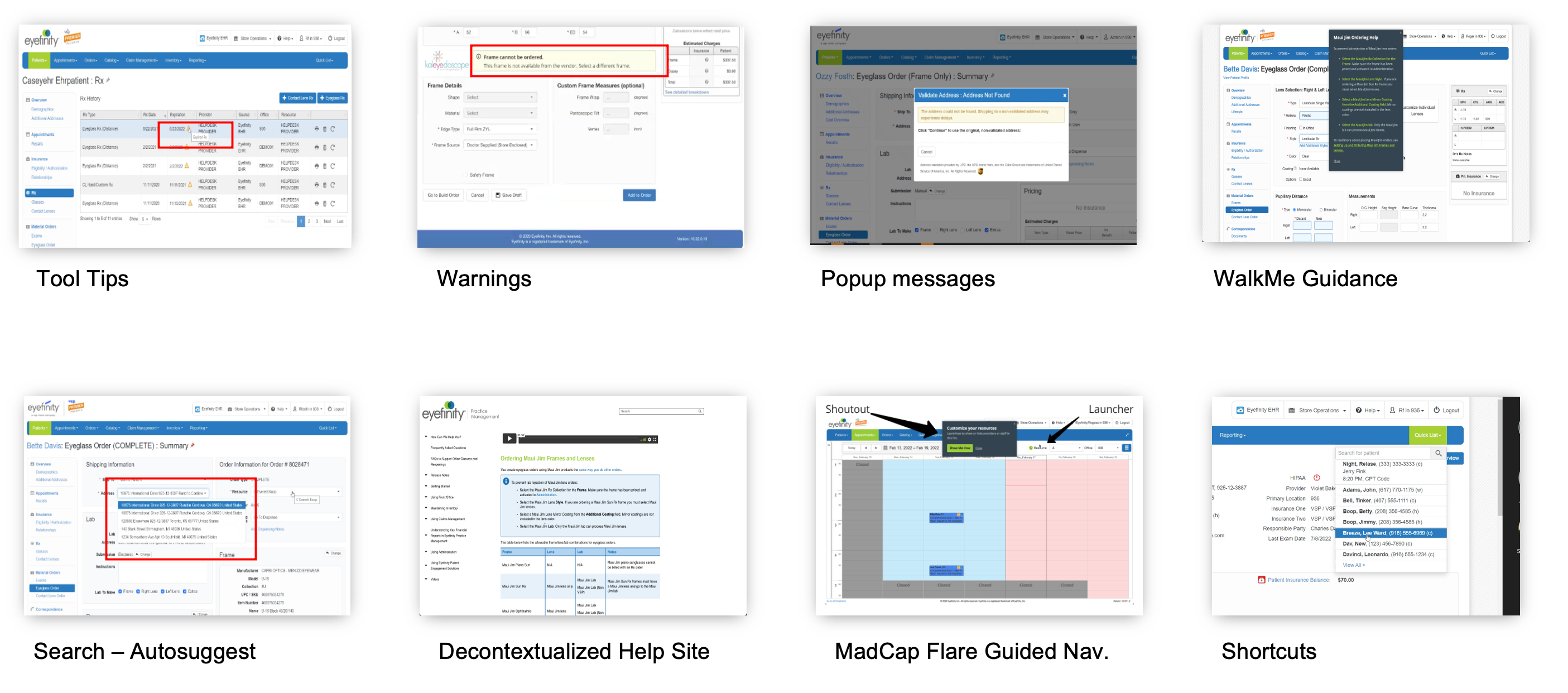
Findings
Store Associates:
- are subjected to a fragmented set of help methods across the plarform, adding to cognitive load and fracture experience.
- help content is outdated and generic, and it does not specifically address issue contextually.
- WalkMe and MadCap Flare tools were used inconsistently, and for purposes they weren't intended for.
Patients:
- are the ultimate recipients of misinformation, poor customer experience, and frustration with the optometry practice.
- expect an efficient, transparent, reliable service they can trust.
Solution
Contextualized Help
In an ideal scenario, product users should not require assistance because the redesign is intuitive. However, for those who do need help, they should have access to contextual help that meets the following criteria:
- Reduced number of pages to visit.
- Effortless for users to find guidance.
- Consolidated help method with progressive disclosure option.
- Data in-context of the function and/or user's needs.
- Providing Sufficient data to prevent users from relying on the service team.
- Safeguards to prevent user errors with in-product guidance handled at the point of interaction.
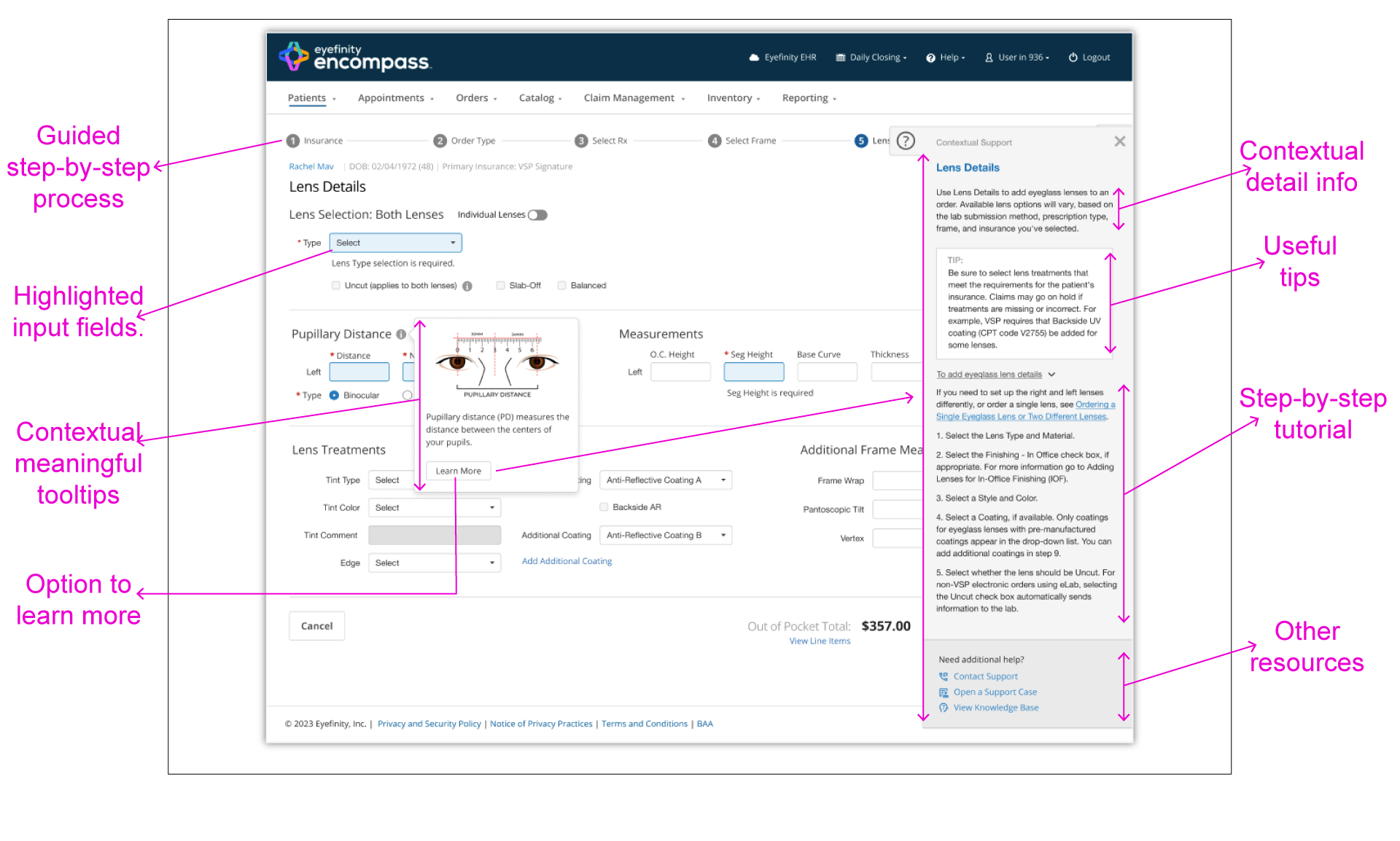
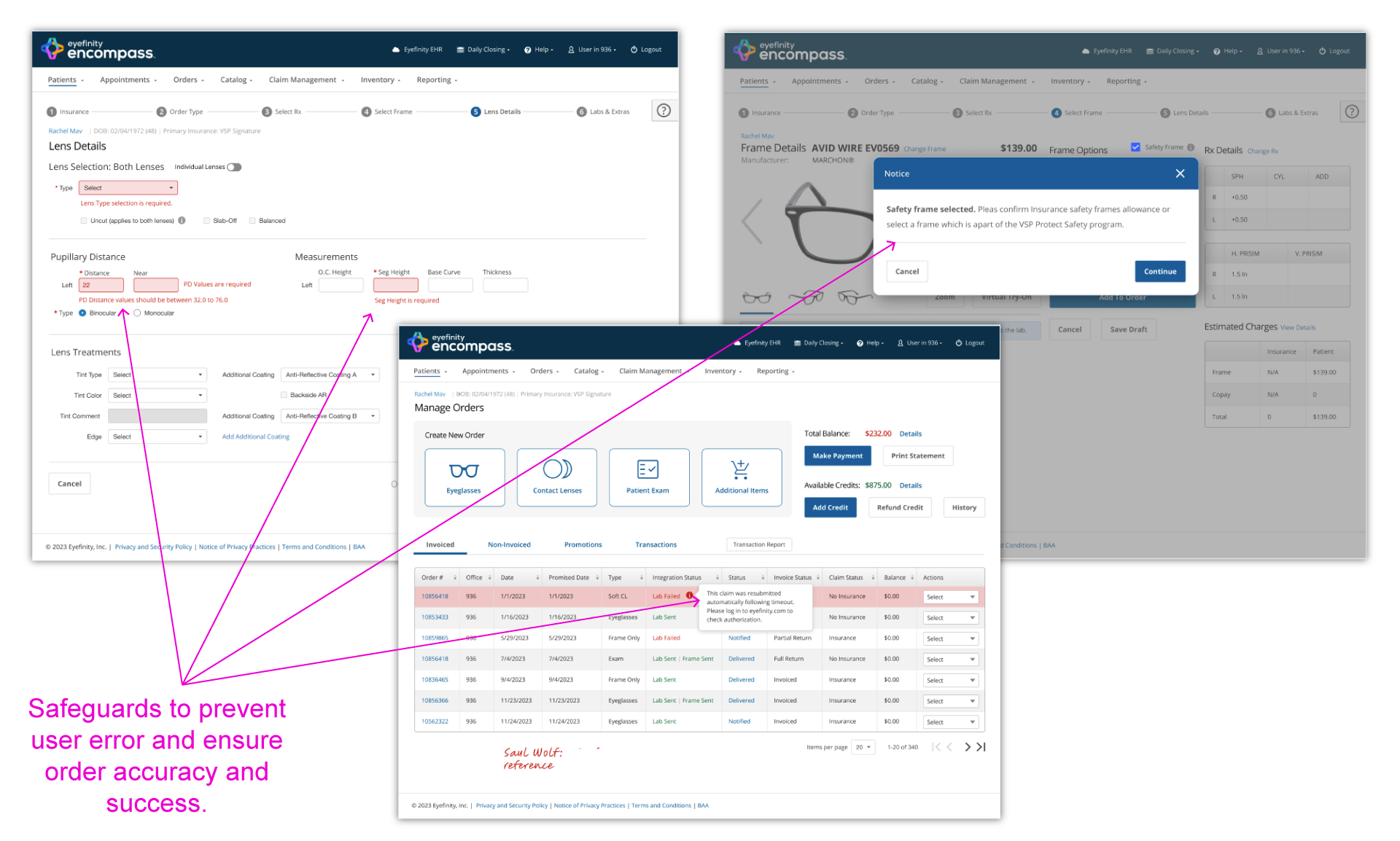
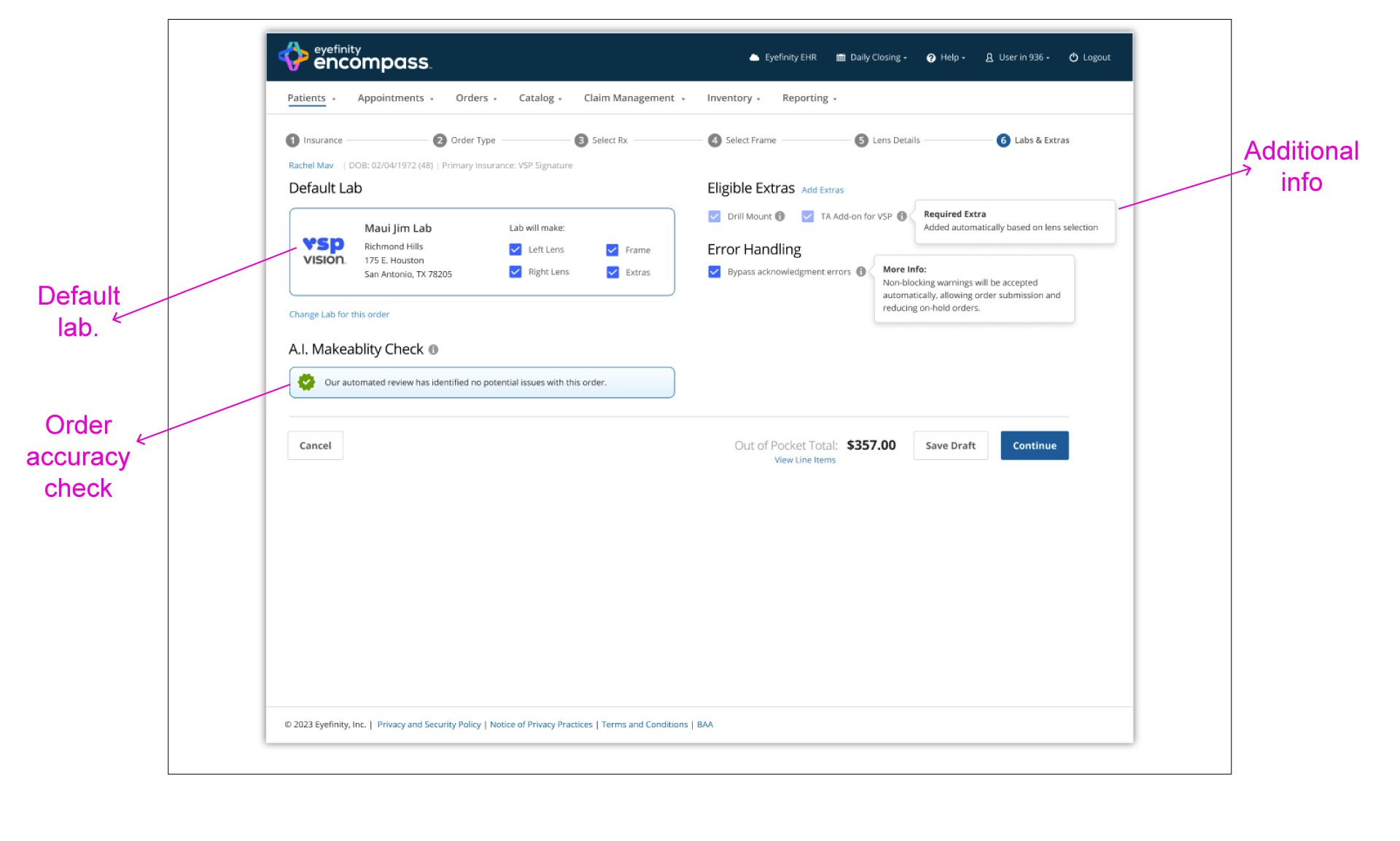
Contextual Help - ChatGPT
Smart search feature is provided on the screen for new associates to learn optometry basics, reducing training times and accelerating onboarding.
